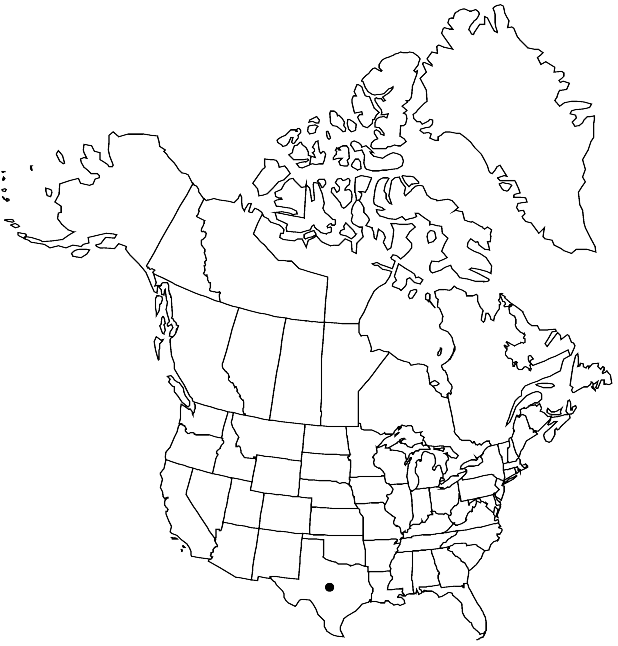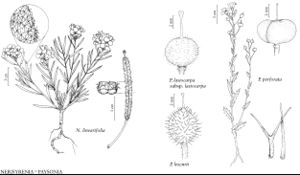familyBrassicaceae
genusPaysonia
speciesPaysonia lasiocarpa
subspeciesPaysonia lasiocarpa subsp. lasiocarpa
Difference between revisions of "Paysonia lasiocarpa subsp. lasiocarpa"
Treatment appears in FNA Volume 7. Treatment on page 614.
FNA>Volume Importer |
imported>Volume Importer |
||
| (2 intermediate revisions by 2 users not shown) | |||
| Line 41: | Line 41: | ||
|publication year= | |publication year= | ||
|special status= | |special status= | ||
| − | |source xml=https:// | + | |source xml=https://bitbucket.org/aafc-mbb/fna-data-curation/src/2e0870ddd59836b60bcf96646a41e87ea5a5943a/coarse_grained_fna_xml/V7/V7_1005.xml |
|tribe=Brassicaceae tribe Physarieae | |tribe=Brassicaceae tribe Physarieae | ||
|genus=Paysonia | |genus=Paysonia | ||
Latest revision as of 22:29, 5 November 2020
Annuals; trichomes simple and branched. Cauline leaves: blade base auriculate. Fruits inflated (often subglobose); valves rounded (not keeled). 2n = 14.
Phenology: Flowering Jan–Apr.
Habitat: Inland areas on sandy, gravelly, and silty clay soils, roadsides, brushland, open hills
Elevation: 0-200 m
Distribution

Tex., Mexico (Coahuila, Nuevo León, Tamaulipas).
Discussion
Selected References
None.
Lower Taxa
None.
